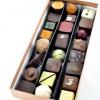-
Welcome to the eG Forums, a service of the eGullet Society for Culinary Arts & Letters. The Society is a 501(c)3 not-for-profit organization dedicated to the advancement of the culinary arts. These advertising-free forums are provided free of charge through donations from Society members. Anyone may read the forums, but to post you must create a free account.
Creating glazes like Gerald Sattler
-
Similar Content
-
- 151 replies
- 50,123 views
-
- 3 replies
- 1,375 views
-
- 1 reply
- 3,324 views
-
- 15 replies
- 2,667 views
-
- 27 replies
- 3,949 views
-
-
Recently Browsing 0 members
- No registered users viewing this page.







Recommended Posts